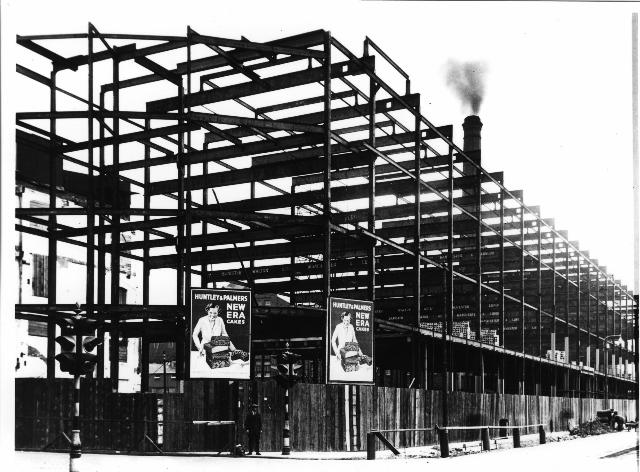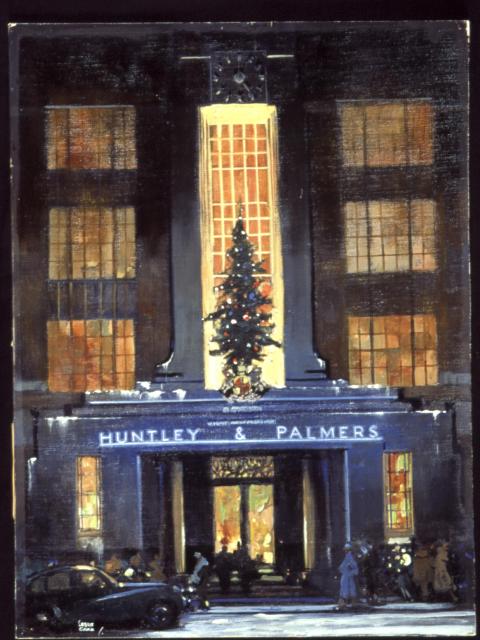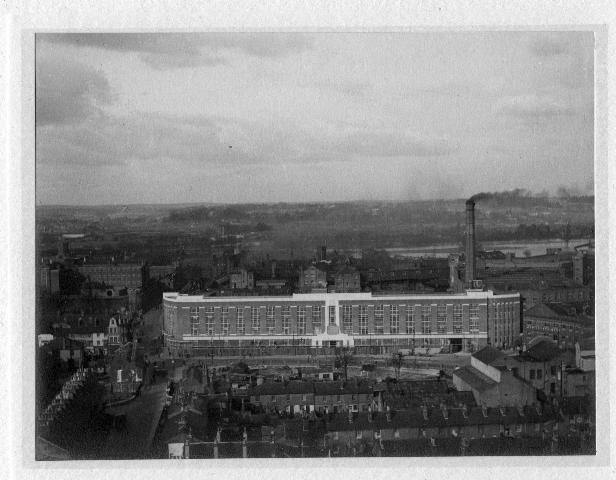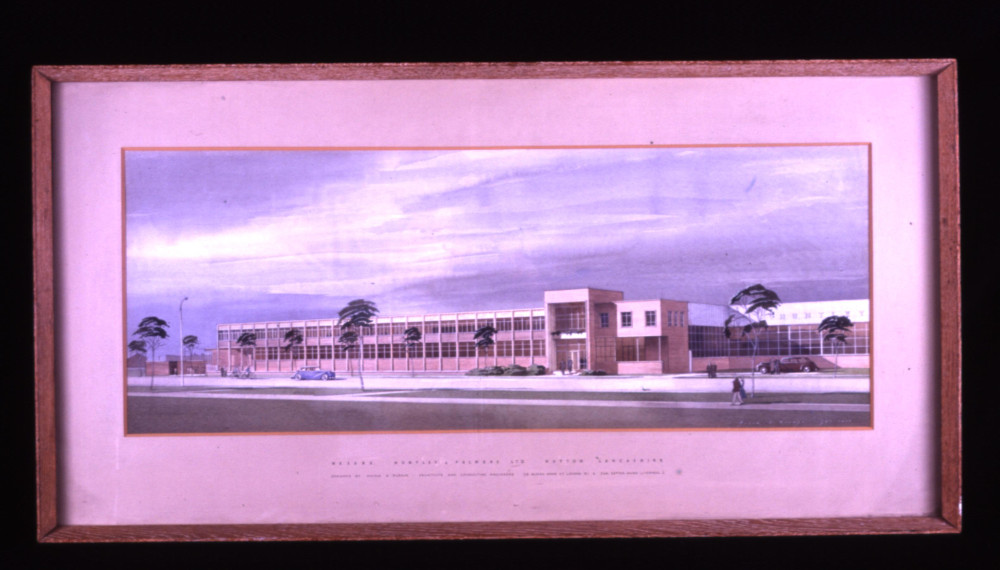In 1934 a Committee of Directors and Managers recommended a new office building to centralise all the administrative functions. In 1936 the Victorian building facing onto Kings Road was knocked down and replaced by a steel and concrete building costing £55,000.

The new 4-storey steel frame building under construction in 1936. The new Board Room, directors' and managers' offices were on the first floor, and the invoice and ledger offices on the upper floors (REDMG : 1997.130.178)

The new building opened in 1937 and included an impressive main entrance which can be seen in this painting, at Christmas time. (REDMG : 1988.43.1)
In 1937 the Executive Committee was persuaded to approve a new building on the South Factory equipped with the latest machinery. Huntley & Palmers was finally entering the twentieth century.

In this photograph you can see the work going on to widen the King's Road and create a canal-side garden for factory workers. Across the canal are the workers' Victorian terraced houses, most of which were later demolished. (REDMG : 1997.130.84)
The Second World War
The outbreak of the Second World War was not unexpected and Huntley & Palmers were well prepared for the rough time ahead. In January 1939 Eric Palmer had set up a ‘Cake and Biscuit Manufacturers Wartime Alliance’ whose job was to ensure that fully adequate biscuit supplies would be available for all those evacuated on the outbreak of war.
Working with Peek Frean
Co-operation between Huntley & Palmers and Peek Frean took a step forward in May 1941 when Huntley & Palmers agreed to make four of Peek Freans biscuit varieties in Reading after their factory had been bombed. With the fall of France and the consequent risk of a German invasion of Britain, the directors took the unprecedented step of recruiting a Home Guard to protect the factory.
Post-war labour shortage
The aftermath of the Second World War, in particular rationing of ingredients, lasted well into the 1950s. Huntley & Palmers problems were also exacerbated by a severe labour shortage. The number of employees in September 1945 was 1,071, lower than it had been since 1867 and packing was a particular problem. The company even resorted to setting-up packing stations in outlying areas such as Hartley Wintney and Theale.
A new factory in Liverpool
The post-war period saw the development of newly equipped factories on the north side of the River Kennet, however the resulting increases in output only exacerbated the chronic labour shortage. In 1955 Huntley & Palmers opened a second factory in Huyton, Liverpool to cope with the increased demand.

Huntley & Palmers factory in Huyton, Liverpool, 1954 (REDMG : 1997.130.467)
The Huntley & Palmers factory transformed modern Reading, physically and culturally. In the next section, learn about the final years of Huntley & Palmers in Reading.





